
views
Creating the Right Environment

Choose a time of day that you like to run. Some people have difficulty running first thing in the morning on an empty stomach, and others thrive on 5 am runs. Find the time of day that works best for your body and gradually add distance and speed.

Create a music playlist. Make a playlist that has varied music that can help you know when to speed up and when to jog. Interval training that transitions between fast sprints and recovery jogs helps to build speed over time. Mix a few of your favorite techno or hard rock songs in with some hip hop or country and create a pump-up mix that will get your legs moving in no time.
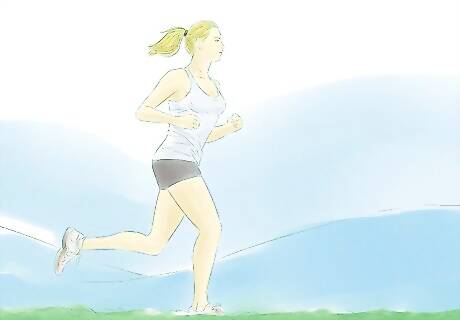
Alternately, try running without music. If you've always listened to music while exercising, try ditching the iPod for awhile and see how that makes your body feel. Some people can increase their running distance by not being restricted by the length or tempo of their playlist. Running without music allows you to focus on your breath and listen to the sound of your body working.

Wear comfortable clothing in layers. Put on a running outfit that makes you feel energized and swift. While some people actually enjoy the heavy feel of a sweatshirt that makes them sweat it out, others prefer lightweight shorts and sweat-reducing material. Wear the clothing that you feel most comfortable in.
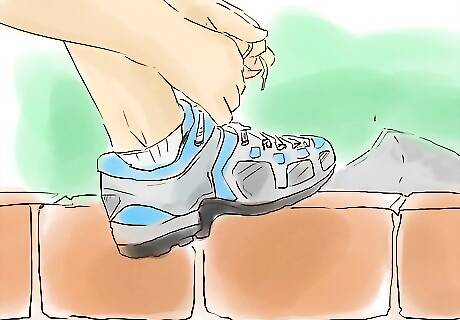
Choose the right shoes. Running shoes come in very specific fits that are tailored to the length and width of your foot and are made for specific types of running. You can injure your feet by wearing improper footwear, so make sure to get your feet fitted by a specialist. Road running shoes should be worn on concrete and other hard, man-made surfaces. Trail running shoes should be worn for off-road running on dirt trails, sandy beaches, and rocky or muddy paths. Know if you have a high-arch, a normal arch, or a flat foot. The arch of your foot will determine how your foot moves as you run. If your foot hits the ground equally, choose a neutral shoe. If you over-pronate your foot by rolling inward too much, choose a shoe for stability or motion control. If you supinate your foot by rolling outward too much, choose a shoe with a lot of cushioning and flexibility.
Establishing a Routine
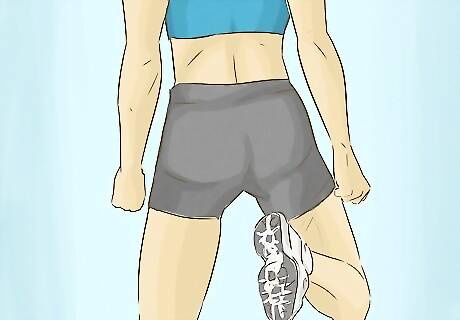
Warm up and stretch. Slowly jog half of a mile before stretching. Doing so allows you to warm up your joints and muscles before you stretch them, thus preventing injury. Be sure to perform dynamic stretches that include motion such as: Leg lifts. Swing one leg out to the side as far as you can swing it, and then swing it back across your body in front of your standing leg, as far as possible. Repeat this stretch ten times on each leg. Cheerleader Kicks. Keep your back and knees straight, and walking forward, lift your legs straight out in front in an exaggerated march, and flex your toes towards you. Butt kicks. Perform an exaggerated running-in-place motion while standing to loosen up your knees, hamstrings, and quads. Walking lunges. Squat into a wide lunge with one foot dramatically out in front of the other, and continue to switch between legs as you slowly progress forward. Shoulder stretches. Don't forget to stretch your torso and shoulders to prevent cramping during your run. You use your arms to propel you forward when you sprint, so you'll need to be loose and limber. Pull one arm straight across your chest and hug it in with the forearm of your other arm. Switch sides and stretch the other arm.
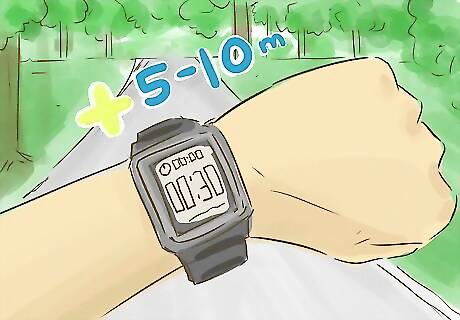
Time yourself to set your baseline. Use a stopwatch to log yourself for various mileages in order to track your progress.

Put yourself on a regiment that builds endurance and speed. Incorporate hills into your runs two to three times per week to push your boundaries and condition your body. Try following this example weekly routine: Day 1: 10-20-10. Jog for 10 minutes, run briskly for 20 minutes (80% effort), and then jog for another 10 minutes. Day 2: Sprint training. Head to a track and practice sprints. Jog ⁄2 mile (0.8 km), then run another mile, sprinting the straightaways and jogging the turns. Start out with just the mile and a half, and gradually increase your distance. Day 3: Rest. Day 4: Long 60-90 minute run. Run at a pace that is comfortable enough to keep going. Day 5: 10-20-10. Jog for 10 minutes, run briskly for 20 minutes (80% effort), and then jog for another 10 minutes. Day 6: Rest. Day 7: Sprint training. Head to a track and practice sprints. Jog ⁄2 mile (0.8 km), then run another mile, sprinting the straightaways and jogging the turns. Start out with just the mile and a half, and gradually increase your distance.
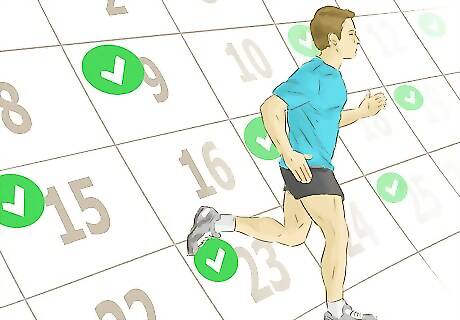
Increase your distance gradually. Being patient with yourself is one of the most important aspects of building endurance. Avoid pushing yourself to run too far until you have become comfortable with a gradual distance increase. Basically, don't try to run six miles right off the bat. Start out with one mile, then build up to a mile and a half, then two miles, etc.

Pace yourself. Don't try to sprint out a five-mile run, you'll exhaust (and maybe even injure) yourself. Start off with a light jog and gradually build up your speed as you run.

Pay attention to your breathing patterns. Your breath can have a huge impact on your ability to run long distances like a 5K or a 10K. Make sure you are breathing in and out of your nose, or in through your nose and out through your mouth, depending on your preference. A steady breath means a steady heart rate and a higher lung capacity.
Learning the Technique for Speed
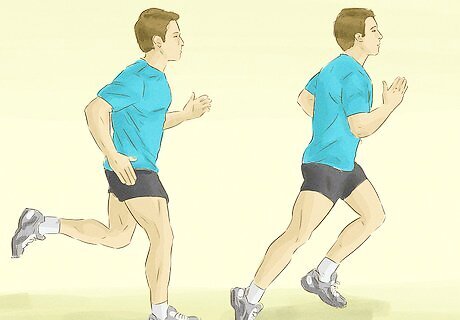
Pay attention to your posture. You want to run with the same poise that you walk. Don't hunch or bend your back as you run, keep your spine as straight as possible.
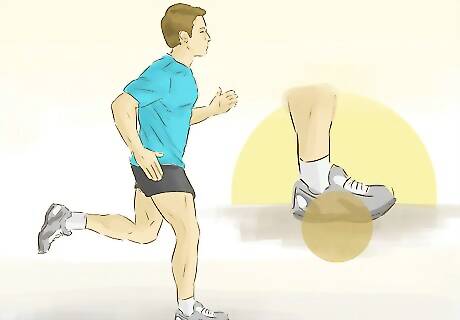
Practice your plantar flexion and dorsiflexion. Plantar flexion occurs when you push off the ground by flexing your ankle joint. Dorsiflexion is the process of pulling your knee up off of the ground at a 90-degree angle. This reloads your ankle for forward push-off.
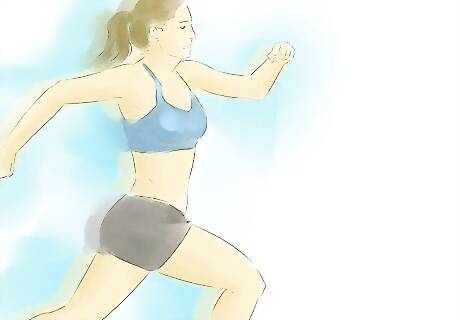
Develop your hip joint so that it supports forward motion. The hip flexor and lower back must flex as you run to hold your back straight and support forward motion. Make sure you are cycling the legs forward, not recovering the legs behind your body.
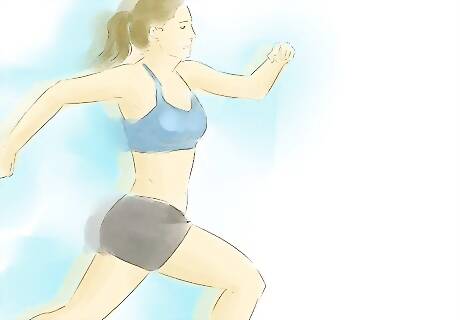
Use your arms to propel you forward. As you run, alternate driving your elbows back and forward in an exaggerated motion. As your elbow drives back, your opposite knee should lift up. Your elbows should also be bent at about 90-degree angles.
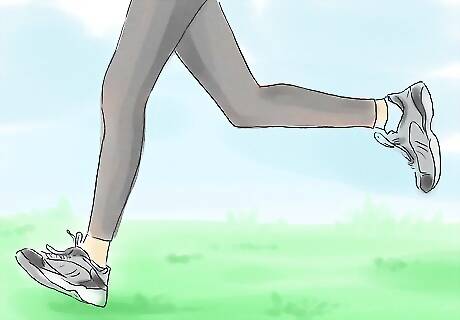
Lengthen your stride. The longer your stride, the more effective your forward motions will be. To create longer strides, use your legs to push rather than pull you forward. This means the bulk of the power when you run should come from whichever leg is behind during the push-off.
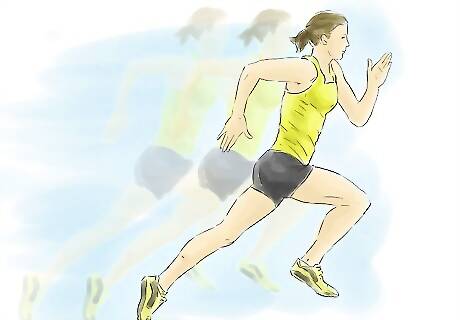
Increase your stride frequency. Once you have the basic technique down, you can begin to decrease the interval between each stride, meaning you will pick up the pace and run faster. Try not to compromise your stride length as you increase your speed.

Begin to incorporate short bursts of speed training into your longer runs. To develop speed over long distances, first incorporate intervals of 30-second or one-minute sprints into your runs.
Choosing the Right Diet

Hydrate with plenty of water. Make sure to drink the recommended 3 liters (0.8 US gal) of fluid for men and 2.2 liters (0.6 US gal) of fluid for women per day. For runs over an hour long, you will need to drink water during your run. Drink water up to two hours before a long run. During the run, sip water in small sips and frequently to avoid bloating or cramping. After a long run, drink 500 milliliters (16.9 fl oz) of water immediately, and then continue to sip water throughout the day to replenish your water supply.

Incorporate lean proteins into your diet. You can get lean protein from fish, chicken, turkey, tofu, eggs, and beans, just to name a few. Salmon is one of the best sources of Omega-3 beneficial fats, which promote a healthy inflammation response. An increase in Omega-3's in your diet may also help reduce the symptoms of asthma. One egg a day will give you 30% your daily value of Vitamin K, which promotes healthy bones. In addition, eggs contain all of the essential amino acids that aid in muscle recovery. After a long run, your body will thank you for replenishing your store of amino acids. Avoid a diet high in red meat or processed meat. Both are thought to increase the risk of colorectal cancer, heighten bad cholesterol levels, and contribute to clogged arteries and a higher risk of heart attack.

Eat nuts. Nuts, especially almonds, are high in Vitamin E antioxidants and Omega-3 fatty acids that can help lower bad cholesterol levels in the body. Vitamin E also protects body tissue from potential damage from free radicals. Be aware that nuts are high in fat, so only consume the recommended serving size daily.

Eat dark, leafy greens, dark berries, and foods rich in beta-carotene. Dark greens and berries are packed full of healthy antioxidants and greens are extremely rich in fiber, which promotes digestive regularity. Foods like sweet potatoes and carrots are rich in beta-carotene, a healthy antioxidant that promotes muscle recovery.

Choose whole grains. When purchasing cereal, bread, crackers, and other carbohydrate-based foods, choose the whole grain or whole wheat option. Whole grains contain fiber and phytonutrients that support healthy digestion.

Consume foods high in potassium. Potassium decreases the likelihood that you will develop cramps while you run, helps keep you hydrated, and speeds up muscle recovery. Good sources of potassium include bananas, milk, yogurt, and potatoes.

Make sure to get enough Vitamin C. Oranges and orange juice are excellent sources of Vitamin C, which is thought to help aid in muscle soreness and promote a healthy immune system. If you aren't getting enough Vitamin C from your diet, consider taking a Vitamin C supplement or multivitamin daily.



















Comments
0 comment